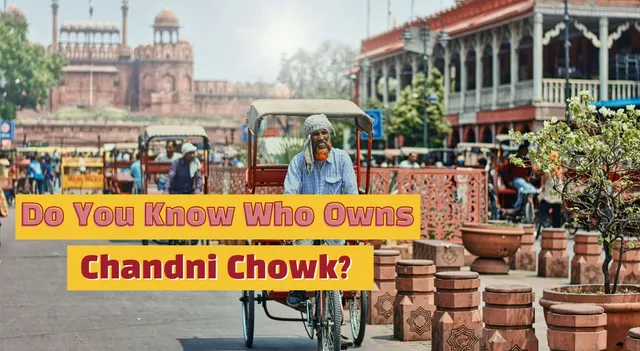- By Ridam Sharma
- Wed, 16 Apr 2025 04:51 PM (IST)
- Source:JND
Do You Know Who Owns Chandni Chowk? Situated in the heart of Delhi, Chandni Chowk is one of the oldest and busiest markets of the nation’s capital. You will get everything in Delhi’s iconic 17th-century market, from spices to sarees. Chandni Chowk is a living proof of India’s heritage and culture. With the rise of the modern era, the bustling market of Old Delhi has also embraced modernity without leaving its authenticity. If you have ever been curious about who owns Chandni Chowk and its history. Look no further, here’s a detailed overview of Chandni Chowk. Check out!
Who Built Chandni Chowk?
The Chandni Chowk market was established in 1650 by Mughal Emperor Shah Jahan and designed by his daughter Jahanara Begum. Over the years, this bustling market has transformed from a moonlit square infrastructure with beautiful canals into a complex and crowded narrow lanes, which are packed with traders, hawkers, and heritage structures.
Chandni Chowk’s Infrastructure:
Chandni Chowk was originally planned as a beautiful market near the Mughal Capital, Shahjahanabad. Its original architecture included a middle water channel and a gleaming pool that reflected moonlight, which gave it its name of Chandni Chowk (translates as the Moonlight Square in English).
Another tale of Chandni Chowk’s name is related to its silver trade market. Initially the 17th-centuary market was called as Silver Street and silver is called Chandi in Hindi, which also sounds like Chandni.
Who Owns Chandni Chowk?
Chandni Chowk is not owned by a single entity but represents a complex blend of historical legacy, which includes municipal governance and private enterprises. Today, Chandni Chowk's ownership and management are shared by several stakeholders like municipal bodies, private builders, and associations of local traders.
Being one of the timeless areas of Old Delhi, Chandni Chowk is under the administrative control of the Municipal Corporation of Delhi (MCD), which is in charge of public facilities, sanitation, and town planning. However, the MCD has also worked together with private players for redevelopment schemes.
Private Enterprises And Redevelopment Of Chandni Chowk:
Private operators like Omaxe Group have ventured into Chandni Chowk's landscape to upgrade facilities without compromising its cultural identity. The Omaxe Chowk mall combines local vendors (e.g., Kuremal Kulfi, Chhabra 555) with global players such as Popeyes, which results in an iconic fusion retail experience.
More such examples are the Dawatpur, which is a food court and bridal sections of the mall that seek to draw in locals and foreigners. This marketing strategy is taking advantage of Chandni Chowk's historical status as a wedding shopping district.
Local Traders And Community Stakeholders Of Chandni Chowk:
Chandni Chowk's dynamism is rooted in its thousands of traders and shopkeepers, many of whom run family-owned businesses that span generations. Communities like the Chandni Chowk Sarv Vyapar Mandal represent the interests of traders, working on redevelopment plans to improve infrastructure without sacrificing the market's disorganised charm. The wholesale markets for textiles, spices, and electronics in the area are still largely unorganised yet majestic in their own way.
Chandni Chowk Is A Cultural Heritage and Tourist Attraction Of Delhi:
Chandni Chowk’s Mughal-era landmarks like the Red Fort, Jama Masjid, and Fatehpuri Mosque are still relevant even after commercialisation. The market is continuing to be as iconic as it has always been—complex lanes, finger-licking street food, and centuries-old havelis (mansions) such as Mirza Ghalib's house. However, the ongoing Initiatives like pedestrianising roads and restoring infrastructure are making it more accessible while respecting its historical essence.
Major Bodies That Own Chandni Chowk?
Chandni Chowk's ownership is a patchwork of several bodies, and key bodies include:
1. Municipal Authorities: The MCD controls public space and infrastructure.
2. Private Developers: Organisations like Omaxe take care of individual development projects under PPP schemes.
3. Local Traders: Family-run shops and associations, without which the day-to-day commerce will become crucially difficult.
4. Archaeological Bodies: They guard heritage sites like the Red Fort and the Jama Masjid.
Such communal stewardship (Co-management) protects Chandni Chowk as a living heritage zone. This co-ownership strikes a balance between being a wholesale market and a cultural icon. During redevelopment efforts, the challenge remains to balance modernity with reminders of Jahanara Begum's moonlit vision.

